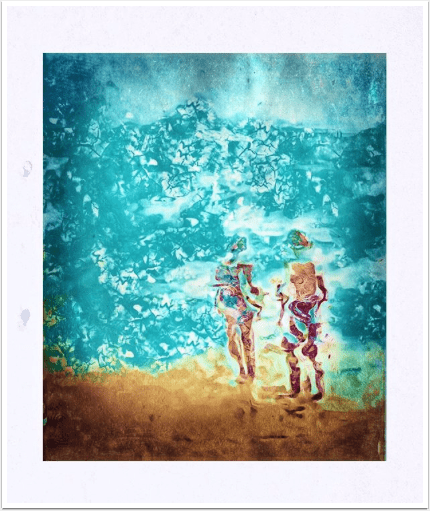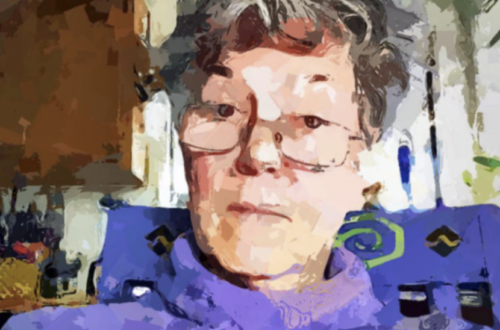Hipstamatic TinType SnapPak Review
We’ve just published this comprehensive review by Egmont van Dyck on the recently launched TinType SnapPak by Hipstamatic. It’s very extensive and we think you’ll enjoy this a lot, over to you Egmont (foreword by Joanne Carter).
“With the release of Hipstamatic’s new Tintype lens and two accompanying film cartridges recently there has been a very positive response throughout the social network system. I myself immediately downloaded the new SnapPak and after just two exposures, felt it was necessary to do an extensive lens/film test, since the results obtained were intriguing.
It was Hipstamatic creative director Aravind taking the lead on how to bring the old traditional look of old daguerreotypes into the digital world of mobile photography. The process proved to be a technical challenge for the team and from my view point, I think they certainly pulled it off with many added benefits as you will see in the following test.
A problem that has been reported by a number of users is it’s ‘sluggishness’ and though it is true, from what I have experienced it is so when using Tinto 1848 lens with either the D or C-Type Plate film, but not so much when using either film with another lens combination. Hipstamatic co-founder Ryan Dorshorst says “The technology and design behind this SnapPak is by far our most complex to-date. Therefore, it takes a bit longer to process these prints than when using our other lenses and films.”
The greatest surprise came when using C-Type film with other lenses. Many of the test images offered beautiful subtle colors and tones, making C-Type film cartridge one that can be applied mostly across the board for beautiful results.
On the other hand, D-Type film does not have such a wide variety of changes and this is understandable and should not be considered as a negative. I found several images had beautiful rich tones, making this also a useful film for different types of subject matter.
The Lens/film test

Just taken a few ‘random hand-held’ exposures cannot constitute a lens/film test since it is not undertaken in a controlled environment. Certain conditions have to be met to have results that are consistent This means the primary light illuminating the scene should to be the same from one frame to the next, and the camera and subject matter must be the same from image to image so that the all the results can be compared with each other.
Though SnapPak Tintype was designed for use in portraiture, due to its central focus point and overall shallow depth of field, this lens/film test is based upon a still-life set, as many of you, including myself will be using Tintype for other subject matter then just portraiture.
Gathering numerous items, a still-life is build on the dinning room which is parallel to a large window, exposed to the North for that perfect indirect light favored by portrait photographs like Irving Penn. With the iPhone 4S secured within a DiffCase, that is mounted to a tripod, the set is fine tuned and fill cards and gobos are added to either bounce light into the set or block any light.
My Hipstamatic camera, version 261 is outfitted with 26 different lenses, allowing for a nice variation of results and covering most combinations that might be on your own Hipstamatic camera.
Note: All photographs are straight from the iPhone 4S. There was no manipulation of any kind other than to resize and insert final image into a template that was resized and saved for the web.
C-Type Plate Film Test Results – iP4012-14525-Original-F-500w

Lens test Tinto 1884+C-type #1-F-650w

Lens test Tinto 1884+C-type #2-F-650w

Lens test Tinto 1884+C-type #3-F-650w

Lens test Tinto 1884+C-type #4-F-650w

Lens test Tinto 1884+C-type #5-F-650w

Lens test Tinto 1884+C-type #6-F-650w

Lens test Tinto 1884+C-type #7-F-350w

D-Type Plate Film Results – Tinto 1848 w

Tinto 1884+D-type #1-F-650w

Lens test Tinto 1884+D-type #2-F-650w

Lens test Tinto 1884+D-type #3-F-650w

Lens test Tinto 1884+D-type #4-F-650w

Lens test Tinto 1884+D-type #5-F-650w

Lens test Tinto 1884+D-type #6-F-650w

Lens test Tinto 1884+D-type #7-F-650w

Possible Lens Combinations With TinType Films

I found the following combination based on the C-Type Plate film producing exceptional results with the following lens combinations:
John S, a rich moody tone
Jimmy, a soft pale green tinge faded appearance. Excellent to simulate
a faded photograph
Melodie, pale colors with a slight green over all tone
Watts, contrasty, little color intensity but holds detail in the highlights
James M, simply beautiful for a retro, aged and color faded photograph
Americana, with center focus and soft sides
Jane, giving a true representation of the scene with a faint creme tone
Roboto Glitter, hot center with faded highlights
Wonder, holds highlights wonderful while being more contrasty
Loftus, faded tones with highlights are slightly washed out
Foxy, giving a true representation of the scene with a faint creme tone
The results with the following lens and C-Type Plate combinations were good and would work for many photographers:
Lucifier VI, more contrasty, but similar to John S, only warmer,
with a touch of rose color
Tejas, beautiful even gradation and natural soft colors with a hint of rose
Matty ALN, light green monochrome
GSquad, contrasty with some detail loss in highlights
Tinto 1848, contrasty with limited focus area

The list for D-Type Plate film is shorter, only because it lacks the subtle color shifts and overtones found in C-Type Plate film, since the C-Type Plate film was developed to replicate hand-colored prints. Yet the D-Type Plate film does stand on its own very well, even though the number of different lens combinations is less then with C-Type Plate film, it is still a winner.
Preferring to shoot in black and white, I like my prints to have rich darks, pure whites and a full range between the two with no detail loss on either end of the spectrum.
Using the John S lens with D-Type Plate film does not disappoint, this includes Lucifier VI. For a more even range but still rich blacks, you might want to try Tejas, Watts, Americana or Jane and while Roboto Glitter is similar to Jane, it doe have a warm tone to the overall photograph.
The Wonder and Foxy lens are also very similar in their results and either of the lenses lend themselves very well for all subject matter were retaining detail in either range is important. Between Tinto 1848, GSquad and Lucifier VI, they all share a shorter range and so are more contrasty in their final results.
My favorite D-Type Plate film combinations are especially with Foxy, followed by Tejas, and Americana. For a deeper range I just might go for my old standby John S lens, but also Wonder or if a little more evenness is desires, my other favorite,lens Jane.
Lenses not mentioned should not be dismissed but, in my opinion, have less appeal for serious fine art photography, yet could be applied well for multi-layered collage photographs.
Final Thoughts

There are three criticisms I have with the TinType SnapPak. I feel Hipstamatic missed a good opportunity by not including a camera case designed especially for the Tintype set. A nice wooden camera case with antique brass fittings that are little shop worn, would have added to the beauty of the Tinto 1848 lens, because now I have no a case to do justice for this wonderful package.
My other concern is C-Type film harsh triangle corners. If anything, I wish they were softer and not so distinctive, as I find it very distracting from the over all image. If anything, I wish it were more like multiple water stains, easing into the image from the corners.
Though I really like the D-Type Plate film’s border, the repetitive recurrence of a particular triangle shape in the lower right hand corner, just about excludes the film for doing a series and that is very disappointing, especially since it is perfect for a series of portraits.
In the end, I am very pleased by Tintype SnapPak. It is going to be very hard for me to decide which combination of C-Type and lens to select for a good portion of my photography, especially since my favorite color combination has been Jane lens with a DC (Domenica Catelli) film cartridge and John S lens with Claunch 72 Monochrome film. Now I will be creating a couple new saved favorites.
Links:
DiffCase:
http://www.diffcase.com/DiffCase.html
Hipstamatic release SnapPak Tintype, click here
http://www.theiphonearts.com/2012/12/hipstamatics-new-tintype-snappak.html



6 Comments
Enrique
Very useful article, . I’ve been using the Tintype Pack and loved the results, however your thoughts on the potential use of the C & D Types with other lenses is very stimulating. Thanks
Irene Oleksiuk
Thanks for all the testing you did. Very helpful and you did all the hard work, I just have to look at your article.
Janine Graf
Wow! You put a lot of work into this review and for that I thank you! Great work!
Lilian
Great review! Thanks!
Jim
I think you missed on the very important aspect of the lens. You mentioned it was designed for portraits. There is actually a lot more to it then that. The lens processes the image and can identify faces – Particularly eyes. If you shoot with other films and the lens, you will notice that the eyes tend to get a little white haze. Its designed to focus on most of, but not all of the face and add dramatic detail to the eyes. Give it a shot. I love it.
Wren
Still sounds like Hipstamatic is one upsell after another to do something that people are baking into their apps after one purchase.
Doesn’t sound like there’s any advantage to buying one of the dozens of phones that actually help take a great photo (adjust WB, ISO, etc.), then allow you a full range of controls instead of just preset filters you pay endlessly for in variety.
I’d be more interested if Hipstamatic could update their business model to something that isn’t like Zynga and provide something that is genuinely better than their competitors without being exponentially more expensive.